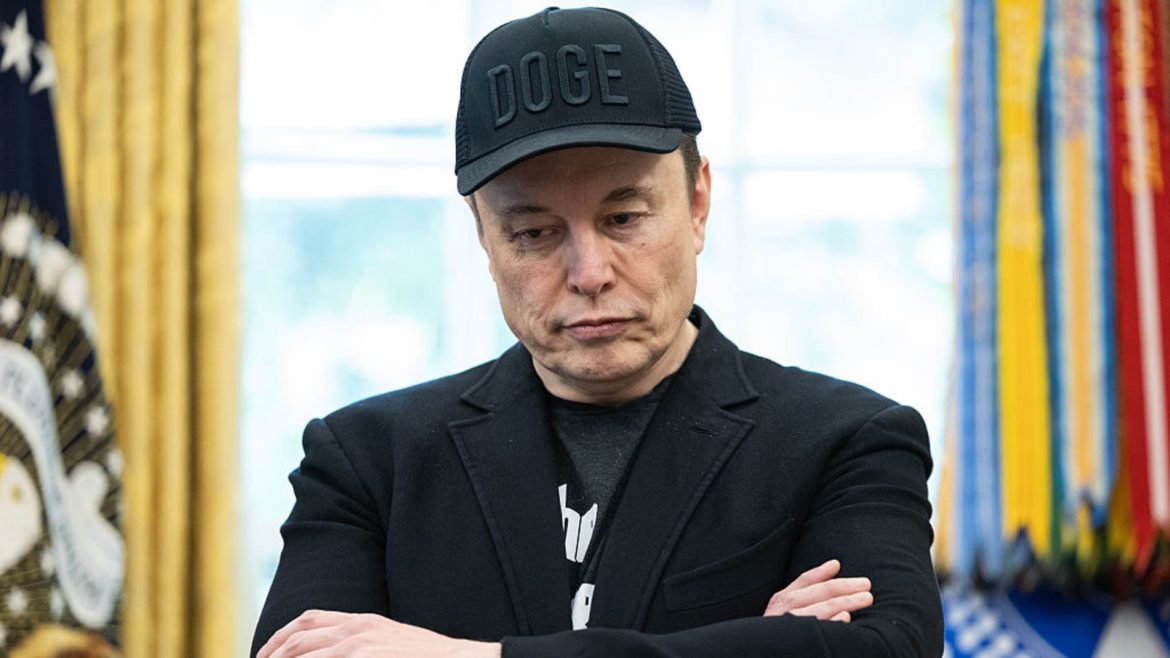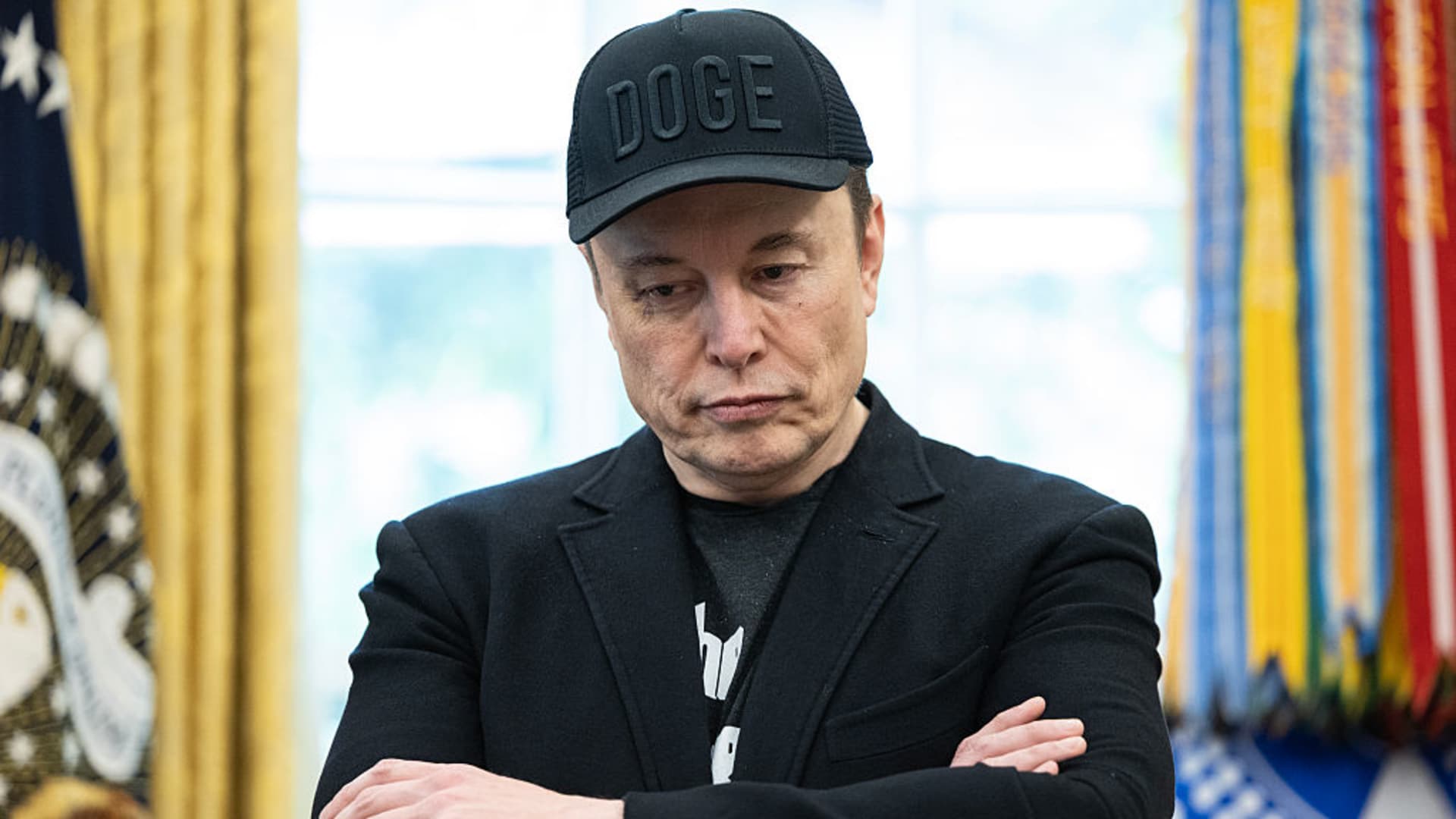Tesla’s Tumultuous Times: A Deep Dive into the Recent Stock Plunge
Introduction: The Fall from Grace
Tesla, once the darling of the electric vehicle (EV) market, is now grappling with a series of challenges that have sent its stock into a tailspin. The company, which has long been synonymous with innovation and disruption, is now facing declining sales, missed expectations, and a stock price that has taken a significant hit. This analysis explores the multifaceted reasons behind Tesla’s recent struggles, examining the interplay of market dynamics, internal challenges, and external pressures that have converged to create a perfect storm for the EV pioneer.
The Numbers Don’t Lie: A Sales Slump
The most immediate cause for concern is the reported decline in Tesla’s automotive sales. The company has experienced a consecutive quarter of declining figures, with some sources pointing to the worst quarterly sales decline in over a decade. This drop in sales directly impacts revenue, which is further compounded by a drop in net income, painting a grim picture for investors. The numbers speak for themselves: a double-digit drop in top and bottom lines is projected, triggering investor anxiety and a subsequent sell-off.
The decline in sales is not just a temporary blip but a trend that raises serious questions about Tesla’s market position. The company’s once-unassailable lead in the EV market is being eroded by competitors who are rapidly catching up. This sales slump is a wake-up call for Tesla, signaling that the company can no longer rely on its brand alone to drive growth.
The Musk Factor: Controversy and Distraction
Elon Musk, the charismatic yet often controversial CEO of Tesla, is a double-edged sword. While his visionary leadership has propelled Tesla to unprecedented heights, his ventures into other areas and pronouncements on various topics have raised concerns about his focus and potential distractions. Recent reports even suggest a correlation between Musk’s political stances and a negative impact on Tesla’s brand and sales. The announcement of a potential new political party further fueled investor unease, contributing to a sharp stock drop.
Musk’s multifaceted involvement in ventures like SpaceX, Neuralink, and The Boring Company, along with his high-profile social media presence, has led to speculation that his attention is divided. This begs the question: is Musk’s multifaceted involvement diluting his focus on Tesla’s core business? The answer to this question is crucial for Tesla’s future, as the company needs a leader who can navigate the complexities of the EV market while maintaining investor confidence.
Market Saturation and Increased Competition
Tesla’s dominance in the EV market is no longer a given. The rise of competitors like BYD, Volkswagen, and BMW, offering increasingly compelling EV alternatives, is intensifying the pressure. This increased competition is chipping away at Tesla’s market share, particularly in key markets like Europe, where sales have seen a significant slump. The market is becoming saturated, and consumers now have more choices than ever before. Tesla needs to adapt and innovate to maintain its competitive edge.
The EV market is evolving rapidly, with new players entering the fray and established automakers ramping up their EV offerings. Tesla’s once-unassailable lead in technology and design is being challenged, and the company must respond with innovative solutions that set it apart from the competition. Failure to do so could result in Tesla becoming just another player in a crowded market.
External Pressures: Tariffs and Trade Wars
External economic factors also play a significant role. The looming threat of auto tariffs, particularly those proposed by figures like former President Trump, casts a shadow of uncertainty over the industry. Tariffs could significantly increase the cost of imported vehicles, potentially impacting Tesla’s pricing strategy and competitiveness in certain markets. Trade wars and geopolitical tensions add further complexity to the global automotive market, impacting supply chains and consumer confidence.
The global economic landscape is fraught with uncertainty, and Tesla is not immune to these pressures. The company’s reliance on global supply chains and its exposure to international markets make it vulnerable to geopolitical risks. Tesla must navigate these challenges carefully, ensuring that its operations remain resilient in the face of external pressures.
Production Challenges and Supply Chain Disruptions
While not explicitly stated in all provided snippets, underlying production challenges and supply chain disruptions could be contributing factors to the sales decline. The EV industry relies heavily on critical minerals and components, and any disruption to the supply chain can impact production targets. Furthermore, ramping up production of new models or expanding production capacity can be a complex undertaking, potentially leading to temporary bottlenecks and delays.
Tesla’s production challenges are not new, but they have become more pronounced as the company scales up its operations. The transition to new production lines and the integration of new technologies can lead to inefficiencies and delays. Addressing these challenges is crucial for Tesla to meet customer demand and maintain its market position.
Profit Margins Under Pressure
The EV market is becoming increasingly price-sensitive. To compete effectively, Tesla may be forced to lower prices, which can squeeze profit margins. A report mentioned a 16% drop in profit, indicating that Tesla is feeling the pressure to maintain profitability in a more competitive landscape. Balancing sales volume with healthy profit margins is a key challenge for Tesla moving forward.
Tesla’s business model has always been built on premium pricing and high margins. However, as competition intensifies and consumers become more price-sensitive, the company must find ways to maintain profitability while remaining competitive. This balancing act will be crucial for Tesla’s long-term success.
The Robotaxi Gamble: A Risky Bet?
Tesla’s future plans heavily rely on the development and deployment of robotaxis. While the potential of autonomous vehicles is undeniable, the technology is still in its early stages and faces significant regulatory and technological hurdles. This reliance on a future technology introduces a level of uncertainty and risk that investors may be wary of, especially given the current challenges facing the company. Is Tesla betting too much on a future that is not yet guaranteed?
The robotaxi initiative is a high-risk, high-reward bet for Tesla. While the potential payoff is enormous, the path to success is fraught with challenges. Tesla must navigate regulatory hurdles, technological limitations, and market acceptance to make this vision a reality. The company’s ability to execute on this ambitious plan will be a key determinant of its future success.
Brand Perception and Customer Sentiment
Beyond the numbers, shifts in brand perception and customer sentiment can also impact sales. While Tesla still enjoys a strong brand reputation among many consumers, controversies surrounding Musk and concerns about quality control could be eroding customer loyalty. Social media chatter and online reviews can quickly influence public opinion, and negative sentiment can translate into lower sales.
Tesla’s brand has always been a key driver of its success. However, the company must be mindful of the potential impact of negative publicity and customer dissatisfaction. Maintaining a positive brand image and addressing customer concerns promptly will be crucial for Tesla to retain its loyal customer base and attract new buyers.
Navigating the Road Ahead: Tesla’s Options
Faced with these challenges, Tesla needs to take decisive action to regain its footing. Several strategies could help the company navigate the turbulent road ahead:
- Focus on Execution: Streamlining production, addressing quality control concerns, and ensuring timely delivery of vehicles are crucial for satisfying customer demand and maintaining a positive brand image.
- Innovation and Differentiation: Tesla needs to continue innovating and developing cutting-edge technologies to differentiate itself from the competition. This includes advancements in battery technology, autonomous driving capabilities, and overall vehicle performance.
- Strategic Pricing: Carefully balancing pricing strategies to remain competitive while maintaining healthy profit margins is essential.
- Diversification: Exploring new markets and diversifying its product offerings could help Tesla reduce its reliance on specific regions or vehicle segments.
- Managing the Musk Factor: Finding a way to mitigate the potential distractions and controversies associated with Elon Musk’s public persona is crucial for maintaining investor confidence and protecting the Tesla brand.
- Building Stronger Customer Relationships: Investing in customer service and addressing customer concerns promptly can help improve customer satisfaction and loyalty.
Conclusion: A Crossroads for Tesla
Tesla’s recent stock plunge is a symptom of deeper challenges facing the company. Declining sales, increased competition, external pressures, and internal distractions are all contributing factors. While Tesla still possesses significant strengths, including its brand recognition, technological expertise, and Supercharger network, it needs to address these challenges proactively to regain its momentum and secure its future in the rapidly evolving EV market.
The road ahead will undoubtedly be challenging, but with strategic planning, focused execution, and a willingness to adapt, Tesla can overcome these obstacles and reclaim its position as a leader in the automotive industry. The current situation represents a critical juncture for Tesla, and the company’s ability to navigate these challenges will determine its long-term success. The world is watching to see if the electric pioneer can weather the turbulence and continue to electrify the future of transportation.





